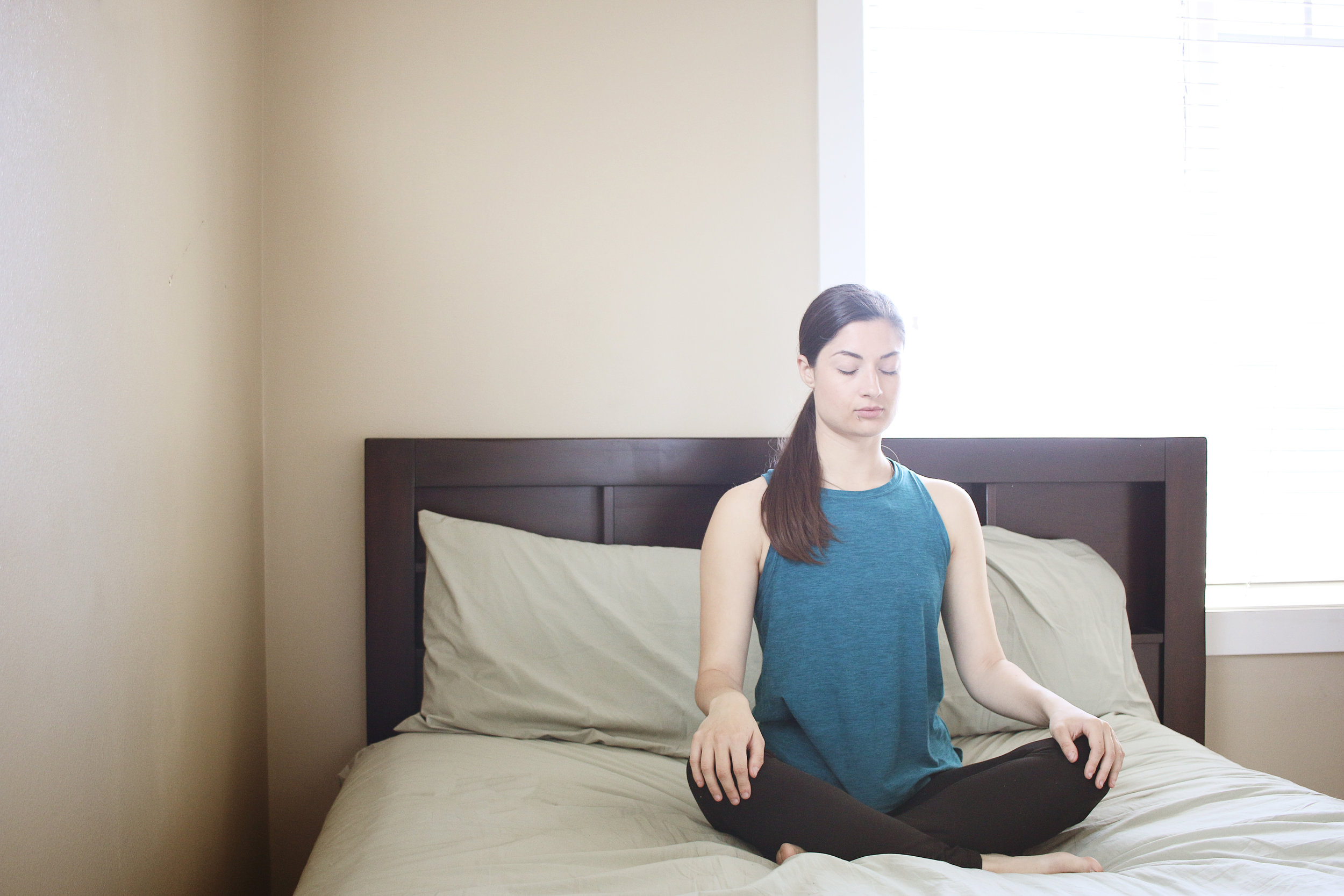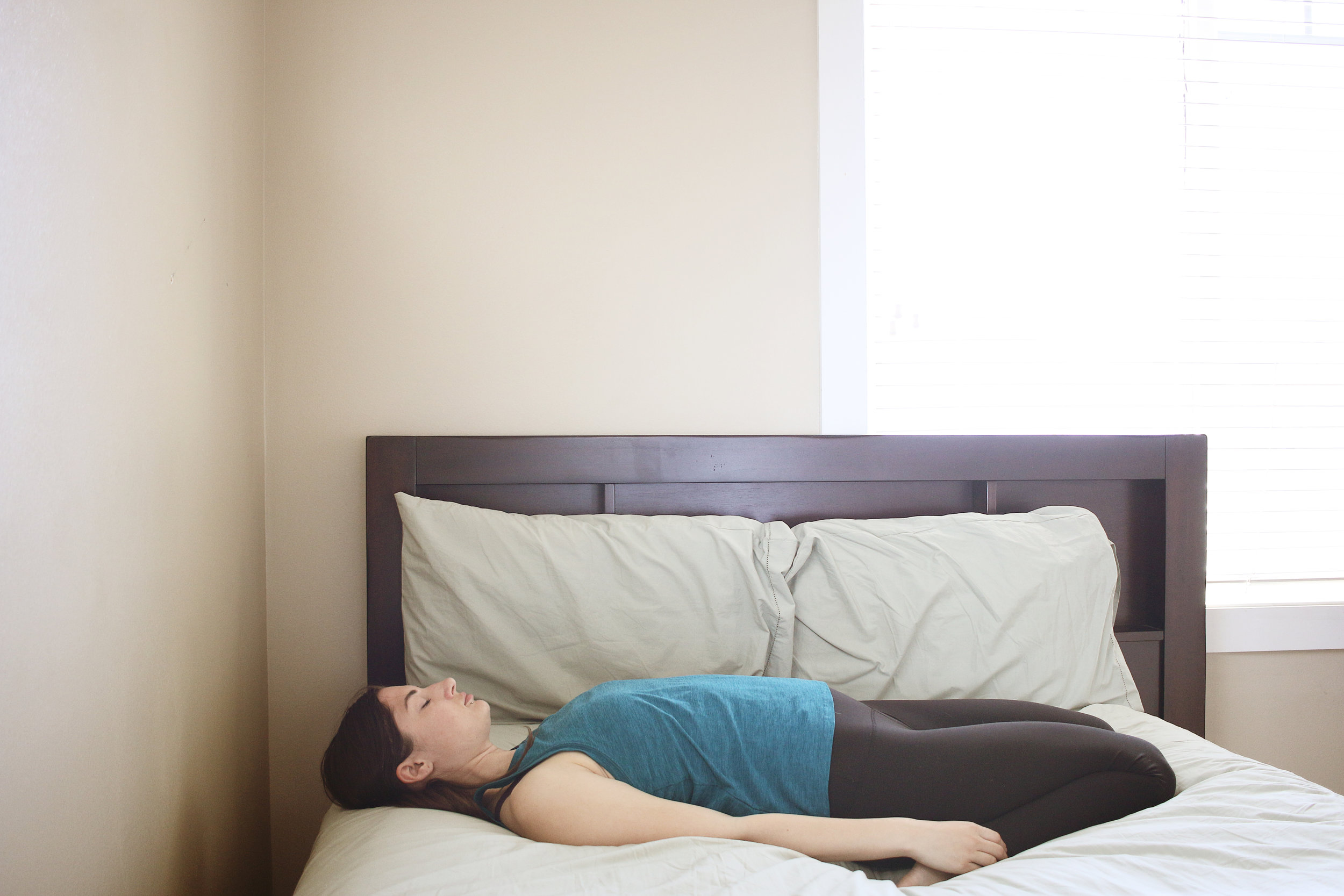Check out this Gentle Home Practice that I have been loving lately in the Yin style! Yin Yoga is a slow-paced approach practice where poses are held for a longer period of time in a relaxed manner, up to 5 minutes or more. This practice evolves into 3 main different levels of understanding, relating to the 3 main aspects of human existence:
On the Physical level Yin Yoga targets bones, joints and connective tissues. There is no aesthetic ideal to reach which makes the Yin Yoga approach very liberating, instead there is an emphasis on a functional approach.
On the Energetic level the practice reconnects with its roots of Taoist yoga, and uses the ancient map and modern theory of the meridians. The long holds in Yin restore harmony in the subtle body by targeting the channels that run through the connective tissues.
On the Emotional/Mental level the Yin approach prepares the practitioner for meditation as one of the central intention of the yin practice is the cultivation of inner stillness and a keen sense of introspection, like Paul Grilley describes it : Yin Yoga is a Quiet Practice.
Begin in Sukhasana (Easy Pose), cross the legs and keep the chest lifted upwards. Let the body settle, grounding down through your Sitting Bones. Softly drop into your practice.
Take a few rounds of breath resting the eyes closed. Let the flow of breath be normal and easy. Now, take a deep inhalation feeling the coolness at the tips of the nostrils and down to the back of the throat, pause for a few seconds. Inhale again going deeper as the lungs get filled, pause for a few seconds. Inhale again going deeper as the lungs get filled more, pause for a few seconds.
Take this moment to become fully present into this moment. Fill now completely into both the lungs and the abdomen, pause and hold the inhaled air- Antara Kumbhaka (Internal Retention). Exhale out completely, in a controlled relaxing way. Pause means- to hold the breath, the inhaled breath is neither let out nor is more air taken in. The whole process is stopped or interrupted.
After complete exhalation, relax. Repeat this as many times as needed. 2 to 5 minutes is a good range!
Transition into Shoelace. Sit on the floor legs extended and spine straight.
Bring the right leg over the left and then bend the knees pulling the feet inwards to extend the Spine. You should feel a stretch to the Thighs and Outer Hips. Make sure both knees are one above the other or if possible interlocked deeper trying to balance the body.
Feet and toes are relaxed along with shoulders. Targeting the Gluteal group of muscles. As we lean forward decompression of the spine is taking place. If you have pain in the hips or knees, just extend bottom leg forward. Add forward fold for a deeper hip opener. Rest the arms if you fold, palms face up as a gesture of receiving. If there is too much tension in the back, keeping the back in an upright position is perfectly fine.
Stay here for at least 2 minutes then switch sides!
Bringing the body to relax in Corpse pose, stay for a few breaths to reset. Then slowly come into Saddle by bringing both ankles outside of the hips, toes into ground.
Targets the quadriceps and maybe a mild stimulation of the Rectus Abdominis especially with the arms above the head. Compression of the Lumbar depending on the feet placement. Knees can be together or separated but not too much space between. Relax the Glutes on the ground. Use a bolster or pillow length wise along the spine if stretch is too much. Ankle discomfort can be relieved by placing a rolled blanket underneath the ankles so you can rest the joint on it.
Remember to breath and relax. This pose can either challenge you mentally by increasing mental activity or soothe your mind. It will fluctuate between those two aspects. Stay her for 3 to 5 minutes!
Slowly and mindfully extend both legs. Feet fall open to release the Hips and Pelvis. Find your final resting posture. Rest eyes closed and as you relax deeper, let go of any tension left. Deep breath in and deep breath out! Stay for at least 5 minutes to reset the mind and body.
Hope you enjoyed this home practice. From my heart to yours, Namaste!


